If you’re a property/building owner, you’ve probably been asking yourself, “are energy-efficient appliances worth it?” a lot lately. The truth is, the pros of energy-efficient appliances far outweigh the cons… but it does require an upfront investment. In this post, we’ll teach you how to tell if your appliances are energy-efficient, all the benefits, and what to keep in mind when shopping.
Aggressive Energy is committed to helping our clients make the most sustainable choices for their energy consumption and their budget. Whether you’re just looking for energy efficiency tips to save money or want to create an electricity plan that makes energy compliance easy, we’re here to help!
Read on to learn if energy appliances are worth it!
How to Tell if Your Appliances Are Energy Efficient
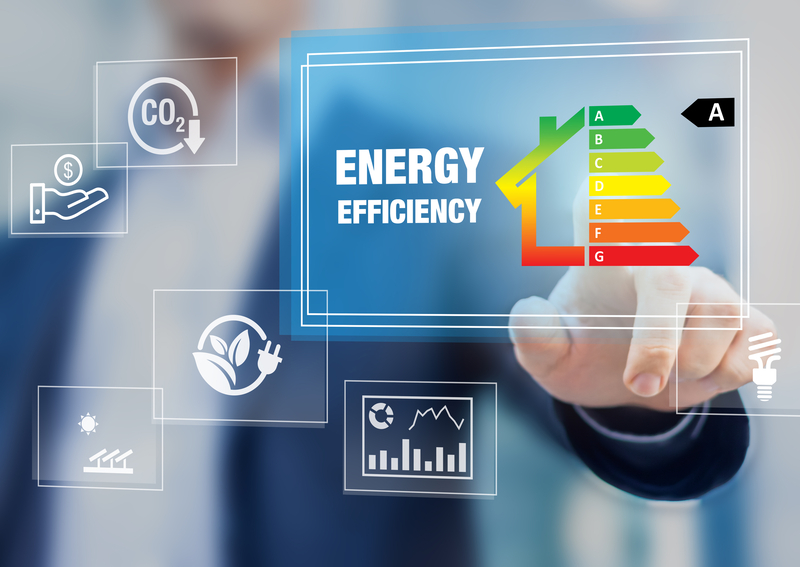
All EE appliances will indicate their efficiency level on the energy guide label, which tells you the estimated annual energy use of the appliance. Reading the label can also help you compare the appliance’s energy efficiency and annual energy consumption to that of similar models across different brands. You should also look for an Energy Star label. Appliances that have this logo are substantially more energy-efficient than the standard model.
What does Energy Star mean?
Operated collaboratively by the U.S. Department of Energy and the U.S. Environmental Protection Agency (EPA), the Energy Star program is the best indicator of ultimate efficiency and savings. Think of the Energy Star label as a guide when shopping for energy-efficient appliances for your business.
In order for an appliance to be Energy Star compliant, it must meet the first-class energy efficiency requirements set by the government-backed program. And, it must do so without sacrificing quality. Energy Star appliances use less energy, which means your electricity bill will be less, too. All while helping protect the environment by reducing harmful emissions.
Related Post: How to Make Reducing Carbon Emissions a Priority
Benefits of Buying Energy-Efficient Appliances
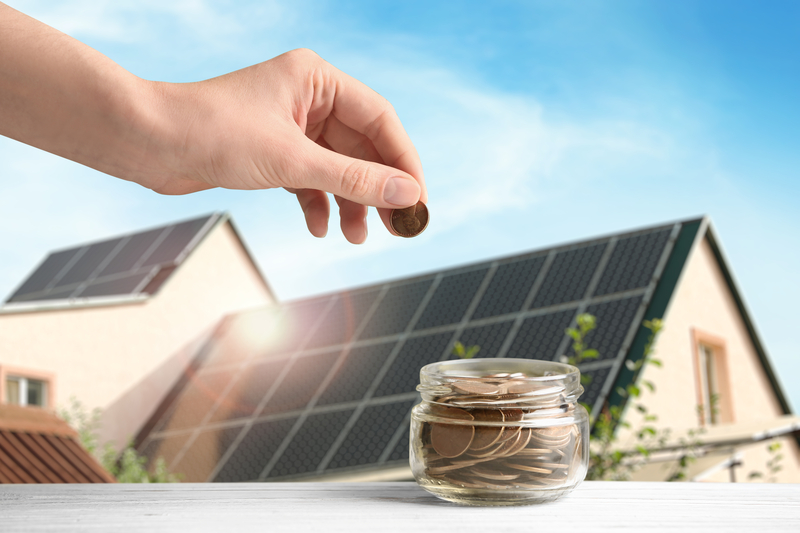
Energy-efficient appliances often come with a higher price tag. In most cases, price is the biggest deterrent. Business owners can’t help but ask themselves: Are energy-efficient appliances worth it? The answer is yes – here’s why.
Energy-efficient products lower electricity bill
Energy-efficient products are guaranteed to lower energy expenses, even if you have appliances that are continuously running. The average home appliance lasts between 10 and 20 years, while Energy Star compliant appliances consume between 10% and 50% less energy annually than their non-energy efficient counterparts.
Recieve tax credit for energy-efficient appliances
The Energy Policy Act of 2005 (EPACT) allows businesses to deduct the cost of energy-efficient upgrades to commercial buildings. Buildings that save at least 50% of the heating and cooling energy of a system can deduct up to $1.80 per square foot. Partial deductions for the building envelope, lighting, or heating and cooling systems are available up to $.60 per square foot, too. For more information, see the 179D Commercial Buildings Energy-Efficiency Tax Deduction page.
Enjoy an energy-efficient appliance rebate
Energy Star partners offer incentive rebates to encourage consumers to purchase more energy-efficient appliances. The rebates vary depending on your location and the appliance purchased but are usually anywhere from a couple hundred to one thousand dollars. To find energy-efficient appliance rebates in your area, simply go to the Energy Star rebate finder and type in your zip code.
Energy-efficient products are more convenient
One thing to keep in mind when it comes to energy-efficient commercial appliances is that they function with your needs rather than against them. For example, refrigerators that are energy efficient use less energy to achieve colder temperatures faster. This provides you with the advantage of preserving the freshness of your goods for a longer period of time. So when you pay the amount an energy-efficient appliance costs, you’re getting a product that works more efficiently, too.
Related Post: Renewable Energy Trends and Green Energy Industry Facts
Buying Energy-Efficient Appliances
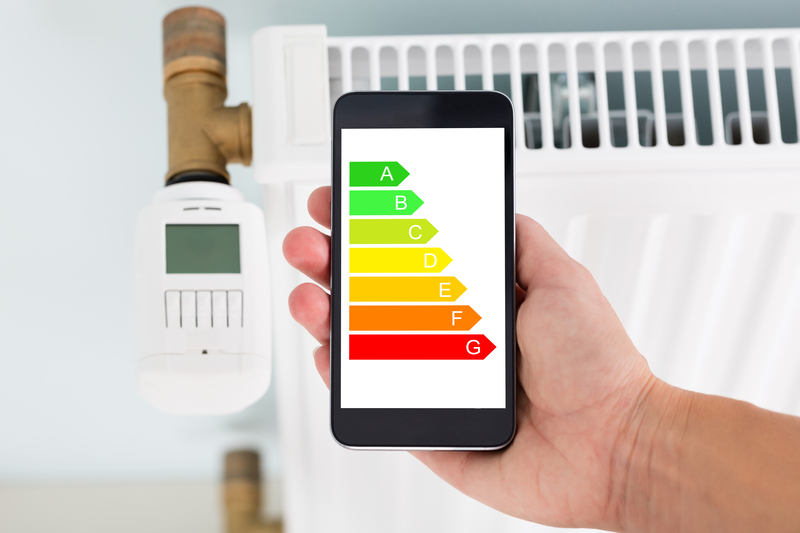
Now that you know why energy-efficient appliances are worth it, it’s time to get into buying them. Here’s a step-by-step guide to buying energy-efficient appliances.
1. Measure the space your new appliance will be stored in
Always be sure you know the measurements of your space so you can ensure the appliance you’re looking at will fit. It can’t be a tight squeeze, either- you have to be sure you have enough clearance for ventilation. You’ll also want to be sure you can open/close a lid if applicable.
2. Check your area’s Energy Star rebates to choose an appliance
If you aren’t sure where to start when replacing your old appliances with new, energy-efficient ones, then start by browsing the Energy Star rebate finder. That will help you set a budget for the purchase, too.
3. Weigh the appliance’s estimated energy use as much as its price
When making a buying decision, sometimes you just have to go with whatever’s in your budget. However, you can actually save money by buying the more expensive model if it’s significantly more energy efficient. If you want to maximize your ROI and are able to put a little bit more into your investment, you’ll thank yourself later.
4. Take the time to make a thoughtful decision
Remember, this appliance will last you a long time. Always take the time to read the appliance’s energy guide and compare/contrast it against similar models. Don’t be afraid to ask your energy provider for their opinion, too!
Related Post: Why Solar Power for Business is Worth the Investment
Are Energy-Efficient Appliances Worth it?
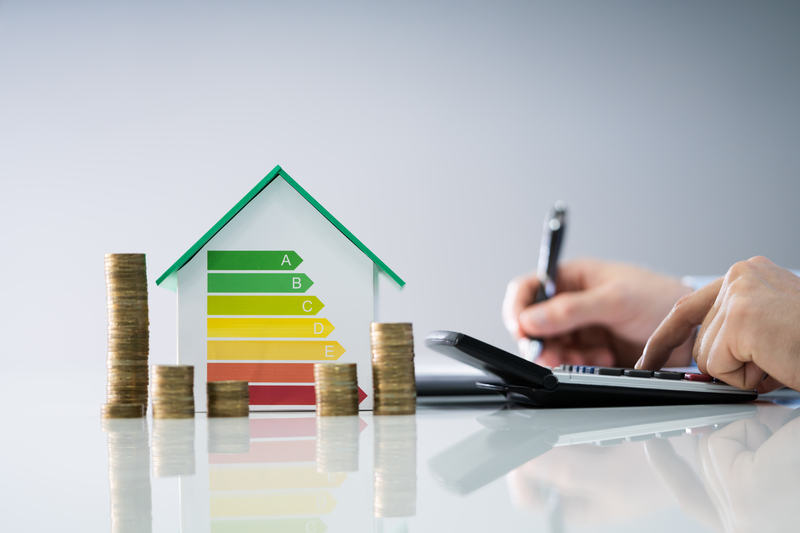
In short, the answer is yes, energy-efficient appliances are worth the investment. When you replace inefficient appliances in your house, you can save hundreds of dollars per year on your energy bill. While the savings from one energy-efficient appliance may seem insignificant on its own, keep in mind that your commercial appliances will last between 10 and 20 years. Those small monthly savings will add up over time, and in most cases, the higher energy-efficient appliances cost will be repaid by the energy savings. Plus, with the Energy Star rebate and tax credits for energy-efficient appliances available to businesses, the cost may not be as high as you think!
At Aggressive Energy, we’ve got the dedication and resources to set you up for success. We’ll help you choose the most energy-efficient options for your business to help you meet your sustainability and financial goals. Contact us today!
This article is your complete guide to installing the best solar battery for your business. Because if you’ve taken the plunge and invested in installing solar panels for your business, we recommend you look into installing an energy storage system using a solar battery to maximize the benefits of using renewable energy. Battery energy storage, in general, is always a smart decision as it improves the reliability of your power source and helps decrease your energy bill while increasing your sustainability.
As energy technology continues to advance, it’s important to keep up with renewable energy trends and innovations available to you that will upgrade the way you manage your energy consumption. At Aggressive Energy, we have access to the most efficient energy resources and are dedicated to creating an energy plan that maximizes our client’s ROI. Contact us today to see what we can do for you!
If you’re ready to learn more about solar battery energy storage systems, read on!
What is a Battery Energy System?

Battery energy storage systems store excess energy generated by solar panels and/or other renewable power sources to use when needed later. They typically include built-in software that is used to operate and control the system. With their simple installation and low level of required maintenance, we believe solar batteries are the future of energy storage.
How do solar battery backups work?
- The battery is charged by solar panels
- The system software optimizes the use of stored solar energy
- Stored energy is discharged when you need it, and/or at the most cost-effective times
So instead of transferring any unused solar energy to the grid, you’ll use that energy to charge your solar battery storage system. Then, if you use electricity after the sun has set, you’ll draw from your solar battery instead of the grid.
Advantages of Solar Battery Energy Storage Systems

With a solar battery energy storage system, you’ll have the option of using electricity from the grid or your solar battery. This gives consumers more power over their energy consumption and monthly bill. Here are the main advantages of battery energy storage systems.
Batteries allow you to peak-shave energy prices
You can save a lot of money with on-site battery energy storage by charging the batteries during off-peak hours when electricity pricing is the cheapest. This process is called peak-shaving because it allows you to use energy during peak hours without paying peak price. Batteries can accomplish this in two ways depending on the type of rate plan you’re on. If you are on a time-of-use or other time-varying rate, you can draw electricity from your solar battery during periods during peak hours. If you are on a demand charge rate – which is more common for commercial businesses – battery storage can help you save money each month by lowering your demand fee.
Related Post: When is the Cheapest Time to Use Electricity?
Storage battery systems help reduce carbon footprint
Not only do batteries make it easy to use energy efficiently by making sure you use what you generate, but they’re also a great way to operate sustainably. Renewable energy battery storage for resources like solar power decreases your energy system’s reliance on the grid, which was powered only 12% by renewable resources in 2020. It ensures that you use all of the clean energy generated from your solar panels, making you less likely to use nonrenewable resources thus cutting down your direct and indirect carbon emissions.
Battery storage gives peace of mind during outages
While you will remain connected to the grid, you will be able to function “off-grid.” By using a combination of solar power and energy storage you’ll be able to keep your power on and functioning normally, even during a storm or power outage. If you only have a solar panel system without a battery and there’s a power outage, then you’ll be without power, even on a sunny day. This is because your solar panel system will automatically shut down during a power outage to avoid sending electricity onto transmission lines to reduce risk for utility personnel as they attempt to repair them.
Related Post: Local Law 92 and 94 Compliance: What is a Green Roof?
Do You Need a Solar Panel Battery Storage System?
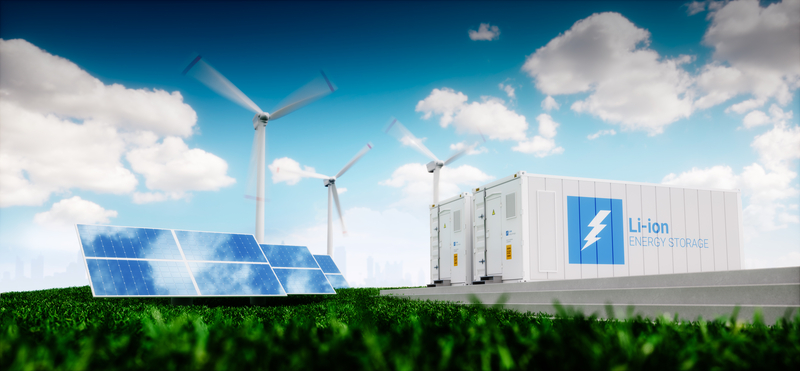
Now that you understand how battery storage works, it’s important to give some thought to if you actually need to install it at your business and how you plan to use the energy. Here are some of the most common reasons business owners tend to install solar power battery storage at their building:
- Business owners looking to power their entire business with off-peak priced electricity stored on the battery storage system
- Business owners looking to become energy efficient
- Business owners looking to power a specific piece of equipment
- Business owners looking to maximize their ROI on solar equipment upgrade
How to Choose the Best Solar Battery For You
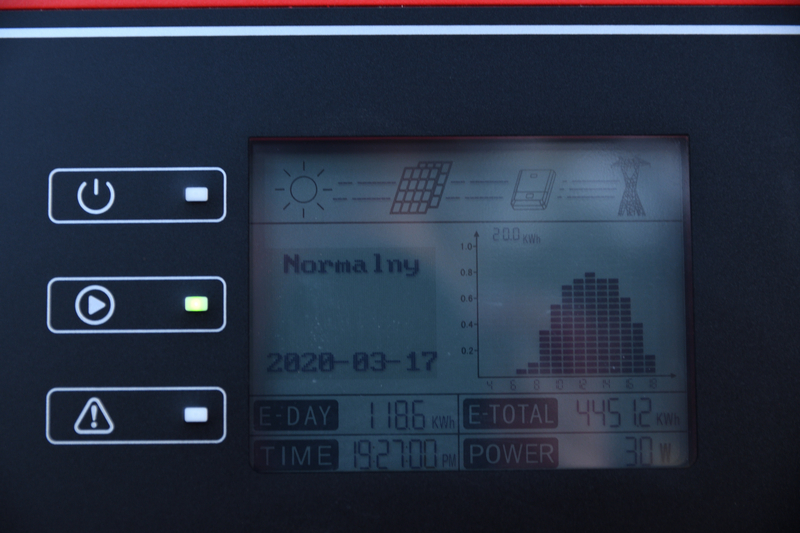
When researching the best battery energy storage options, there are a variety of possible decision criteria and comparative points to consider. Below are a few things to keep in mind as you make your decision.
Solar battery life expectancy
The battery’s lifespan is essentially how long it will store energy. Solar battery units have a lifespan of between five and fifteen years, while solar panels have a lifespan of about 25 years. However, your batteries life expectancy can possibly be extended depending on the type of battery it is, its usage cycle, the temperature of the location in which it’s installed, its warranty, and how often it goes through maintenance.
Battery round-trip efficiency
The round-trip efficiency of a storage system is the percentage of electricity stored that is later retrieved. The greater round-trip efficiency a battery has, the less energy it loses during the storing process. Every electrical process involves losses, which means that you will lose some kWh of electricity when inverting it from direct current to alternating current, or when putting electricity into and then taking it out of a battery.
Related Post: Building Energy Management Systems: A Definitive Guide
Solar battery storage capacity
Always look for a battery’s useable capacity, as this indicates the amount of stored electricity that the battery can actually access. This is the amount of electricity that it can store and supply to your building. While power is measured in kW, storage capacity is measured in kWh, which is equal to power multiplied by time. The more power you use from the battery’s stores, the faster you deplete your stored energy. So just be sure you consider how often you plan to use the solar panel battery storage system so you know what storage capacity you need.
Find the best battery storage company
You can research this on your own, or you can utilize the knowledge of a trusted energy provider like Aggressive Energy. We’ll help you compare the types of solar batteries available to you to ensure you choose one from the highest-quality manufacturer. Reach out to our team today to get started!

Local Law 97 is one of several NYC local laws expected to have a large impact on building owners throughout New York City in the coming years. In fact buildings are one of the top contributors of carbon emissions, and NYC’s residential and commercial buildings contribute roughly 70% of the total CO2 emissions in the city. That’s why the NYC Council has implemented this climate change mitigation strategy, which has made reducing emissions of built infrastructure a priority.
Luckily, Local Law 97 compliance won’t be as tedious as it many have made it seem. In this article, we’ll cover everything building owners need to know about NYC Local Law 97 compliance and how to reduce your carbon footprint.
Aggressive Energy is committed to giving our clients the tools and resources they need to be both financially and energy efficient. For more help on NYC local law compliance, check out our complete guide to New York City building compliance.
Read on for our Local Law 97 compliance guide for NYC building owners!
What Is Local Law 97?

Local Law 97 (also known as LL97) was passed in New York City as a part of the Climate Mobilization Act. Local Law 97 requires buildings larger than 25,000 square feet to meet strict greenhouse gas emissions limits. This new law will affect 50,000 buildings across the city. The main goal of these new LL98 laws were created in an effort to reduce carbon dioxide emissions from commercial buildings in the city.
Who Does Local Law 97 Apply To?
NYC Local Law 97 applies to commercial buildings larger than 25,000 square feet. These buildings must keep their carbon emissions under a set limit each year to avoid carbon fines and are referred to as “covered buildings” in the legislation. The limits are set based on building type.
If you own a group of two or buildings with a total area over 50,000 square feet under the same tax lot, you will also have to comply, even if one of those buildings is under 25,000 square feet on its own. Buildings owned by the city, buildings that have one or more rent-regulated units, certain types of affordable housing, and buildings of worship are exempt.
What Are the Local Law 97 Compliance Periods?
LL97 will be implemented across the city in two phases. Each phase will have set emission limits on NYC’s large commercial and residential buildings. The two LL97 periods are
- Initial period of 2024-2029
- Second period of 2030-2034
What Are The Local Law 97 Carbon Emission Targets?
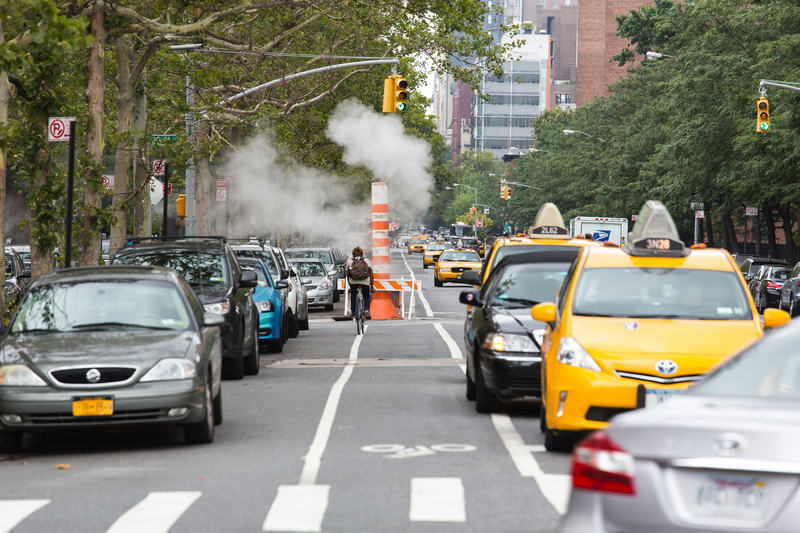
Emission limits for Local Law 97 are set based on type of occupancy spaces within the building. For instance, a mixed-use building, with a ground floor serving as retail space and the rest as residential, calculates its emission limits proportionately to the square footage of type of space.
Here is a list of carbon emission limits by occupancy classifications for Local Law 97:
What Does Local Law 97 Compliance Require?
Compliance requires building owners to create and present an emissions intensity report with a registered design professional’s stamp of approval. Under these filings building owners must report carbon emissions from the previous year. Since the first year of reporting will cover 2024, you’ll submit your first report in 2025. This will continue annually with a deadline of May 1 each year.
This NYC green building law sets out building limits through 2050 in periodic phases, gradually increasing limits on carbon dioxide emissions from buildings. The first two compliance periods are 2024-2029 and 2030-2034, with the rest of the phases to be set by January 2023.
Failure To Comply With LL97

If you fail to comply with Local Law 97, you’ll be fined $268 per metric ton that the building’s carbon footprint surpasses the limit. However, if you develop a history of noncompliance, the Local Law 97 advisory board has the right to take that (along with other relevant factors) into consideration when imposing a penalty.
Houses of worship, buildings with regulated units and other forms of affordable housing are excluded from the bill. The Deal also establishes the Property Assessed Clean Energy (PACE) program to facilitate retrofits through long-term financing, and requires installation of solar PV and green roofs on new buildings and major renovations. PACE financing is tied to the property and not the owner, allowing obligations to be transferred to a new owner when the property is sold and assuaging concerns about securing long-term savings from large retrofit investments.
Failure to submit your Local Law 97 report
If you fail to submit a report, you’ll be fined $0.50 for each square foot of your building, for each month that the violation is not corrected within 12 months. Fortunately, you have a grace period of 60 days within the due date. If you submit your report within that timeframe, you won’t be liable for that fine. Still, don’t wait until the last minute and give yourself an unnecessary headache!
Submitting a Local Law 97 report with false statements
Hopefully, lying on your report isn’t an option you would consider, but just in case: If your report contains any false statement(s), you’ll be charged with a misdemeanor and subject to a fine of up to $500,000. You could also face a 30-day prison sentence.
How To Test For Carbon Emissions Under Local Law 97

Carbon emissions, also known as building emissions, are emissions of greenhouse gases, such as carbon dioxide. A building’s emissions are created as a result of its operational functions. The total amount of greenhouse gases you emit is your carbon footprint.
Calculate your carbon footprint and building emissions intensity
The first step to complying with Local Law 97 is to calculate your building’s current emissions. This can be done by inputting the type and quantity of fuel used in the building into the free US EPA’s Energy Star Portfolio Manager. This will allow you to gauge the excess emissions you need to eliminate in order to comply with the new law.’ If your building is in the process of completing your Local Law 87 energy audit, this could be a good place to start. Ask your energy auditor to look into longer-term energy saving strategies.
How To Reduce Carbon Emissions To Meet Local Law 97 Goals
How Local Law 97 Impacts Building Owners

LL87 requires emissions to be reduced by 40% city-wide by 2030, which is a 26% reduction for carbon dioxide emissions from buildings. That equates to about 5.3 million metric tons, a number equivalent to the total emissions from the city of San Francisco.
The NYC green building law impacts nearly 50,000 buildings, many of which are critically above their emissions limit. This means a LOT of buildings will more than likely require substantial energy management system updates or alternate compliance by 2030. This was designed purposefully: By making 2024-2029 limits easier for the standard building to comply with, you have nearly a decade to prepare for the much tighter limits beginning in 2030.
Financially Preparing For LL97 And Its Varying Phases
You may think 9 years is plenty of time to prepare, but keep in mind that switching to clean energy on a large scale can cost a hefty upfront fee. Even if you were planning to sell that property in the next few years, potential buyers will take the cost of the necessary upgrades into account. This means you’d get less money than you probably hoped for, whereas upgrading the energy system could only add value.
Keep in mind that if your building usage is largely determined by tenants, you’ll have to create a plan that involves working together. Any plans or requirements will need to be communicated to current and future tenants.
Where Can I Find Additional Local Law 97 Information?
The 21-page Local Law 97 document is available for download here. You can also find it later by accessing the official NYC Local Laws webpage. The Urban Green Council has created a two-page NYC Building Emissions Law summary that you may also find resourceful.
If you are interested in learning more about Local Law 97 and how you can start to reduce your carbon emissions be sure to contact us online, call our office at 888-836-9222 or fill out the form below!
Speak With A Local Law 97 Energy Expert Now
This article is your complete guide to installing commercial EV charging stations! Because as more and more Electric Vehicles (EVs) hit the road, you may want to consider getting a commercial EV charging station for your property. From real estate developers and property managers to clean energy companies, businesses of all kinds have all enjoyed the benefits of installing an EV charging station. In this article, you’ll learn everything you need to know about the types of EV chargers, installation and maintenance costs, and why your ROI will be worth it.
At Aggressive Energy, we’re committed to helping you make sustainable decisions for your building energy consumption and your bottom line. Our clients rest easy knowing that they have our team of experts to lean on for energy market fundamentals, regulatory updates, and risk management.
Read on to learn more about commercial EV charging stations!
What is EV Charging?
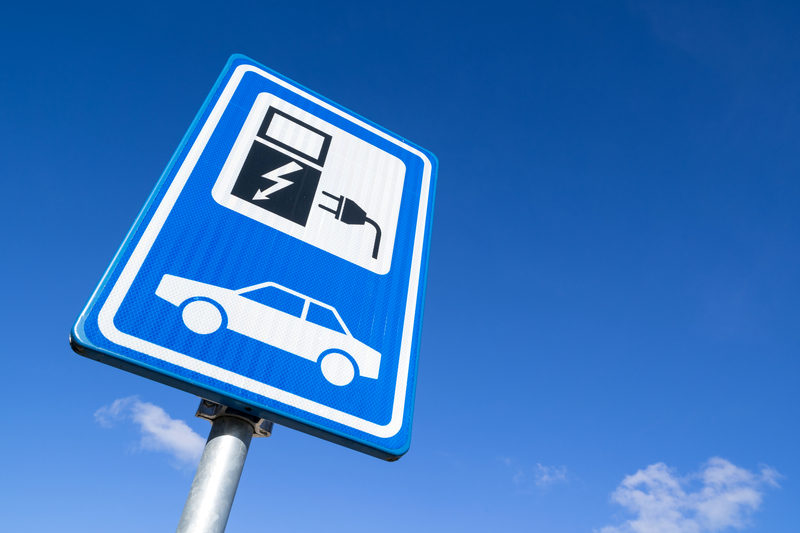
Just like your smartphone, an electric vehicle operates thanks to a battery – so, it won’t work if that battery has no electricity stored in it and will need to be recharged. That’s where EV chargers come in, and there are a few different types of EV chargers that all have specific uses and energy requirements. For example, commercial electric vehicle charging stations similar to the ones you’ve probably seen in parking lots employ voltages a good deal higher than an at-home charging station, which means it can charge batteries much quicker.
Before you can decide which is the best EV charger for your business, let’s take a look at the different levels of EV charging stations.
Related Post: How to Make Reducing Carbon Emissions a Priority
What are the EV Charging Station Levels?
- Level 1 Charging
- Level 2 Charging
- Level 3 Charging
What is a Level 1 charging station?
The level 1 charging station offers the slowest charge, but is perfect for drivers who choose to charge their EV’s overnight and travel a maximum of 40 miles per day. It adds anywhere from 3.5 to 6.5 miles of driving range per hour of charging time. This makes it a great option for properties with tenants or anywhere people will have plenty of time to charge. EVs all come with a cable that can be plugged into a standard wall outlet, no EV charger installation needed.
What is a Level 2 charging station?
Level 2 EV chargers have a much quicker charge but need a specific charging station called electric vehicle supply equipment (EVSE). They’re found in a lot of public, high-traffic places and add about 14 to 35 miles of range per hour of charging time. A dedicated 240-volt or 208-volt electrical circuit is mandatory when installing a level 2 charging station. These commercial EV charging stations use the same type of charging cable as a Level 1 EV charger, so any EV can plug in at a level 2 EV charging station.
What is a Level 3 charging station?
Level 3 charging stations are designed for commercial use. They facilitate DC fast chargers to provide the fastest charging time – usually about an hour – of all levels. DC fast-charging stations typically add around 10 miles of driving range per minute of charging time.
How Much Does a Commercial EV Charging Station Cost?
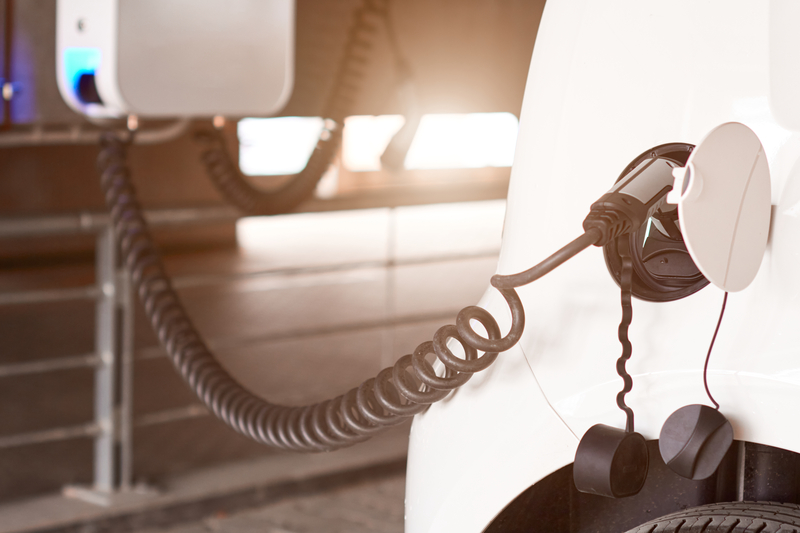
A level 2 commercial EV charging station costs roughly $6,000 to purchase and install. EV charger installation costs can fluctuate depending on your property’s electrical needs, distance to the circuit panel, and how the charging station is mounted. The price fluctuates based on what the specific user needs. The most inexpensive base equipment with the least installation requirements will set you back $2,500. A higher-caliber level 2 charging station cost is typically between $10,000 to $13,000.
Incentive Programs to Save Money on EV Charger Installation
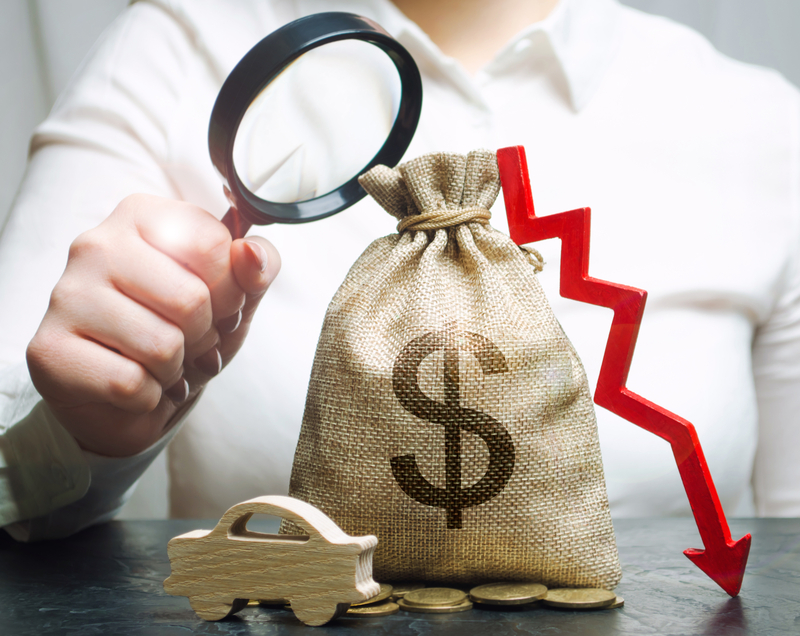
If you install EV charging stations at your business, you can earn some generous grants and rebates. Applying for federal and state incentive programs helps businesses to attract EV drivers, with no expenditures paid by the business. Below are some of the incentive options available for you to apply. The best part is that you can stack these incentives, which can substantially lower your commercial EV charging stations cost.
-
ConEd Make Ready Program: Offers up to 100% of utility side infrastructure costs.
-
NYSERDA Charge Ready Program: Covers up to $4,000 per charging port.
-
Federal tax credits: Rewards up to $30,000 for commercial EV charger installation at your business.
-
Stacking various programs means your out-of-pocket cost is minimal.
Benefits of a Commercial EV Charging Station

There are several benefits of installing commercial EV charging stations at your property. Here are three big ways your ROI will be worth the upfront EV charging stations cost.
Attract people to your business
As more and more people purchase electric vehicles, having EV chargers on the property brings customers to your business. Electric vehicle sales globally totaled 2.1 million in 2019, which is a 40% increase over the previous year. Now is the ideal time to invest in EV charging station installation because the EV market is forecasted to grow to $2.3 trillion by 2041.
Support the green energy movement
While it may just be a nice amenity to offer your employees so they can get their electric car charging at work, it could also be making a bigger impact on the environment. One of the biggest concerns people have when considering purchasing an EV is the fear that they won’t be able to find a charging station when they need one. The more businesses that install EV charging stations, the more people feel safe making that commitment to an EV.
Related Post: Renewable Energy Trends and Green Energy Facts
Open an additional source of income
If you already charge tenants to park, then charging a small additional fee for an EV charger parking spot can provide an extra source of income with minimum effort needed. On average, businesses charge 39 to 79 cents per kWh. Additionally, charging for the length of use, or time parked in the spot, encourages employees to move their cars once they’re fully charged, making space for someone else to use the charger. Charging an additional fee for the time that a vehicle is parked in the spot discourages gas-fueled vehicles from parking in the spot just because it’s the first spot they see.
At Aggressive Energy, we’ll make sure you’re reaping the benefits of every sustainability incentive you qualify for. We offer our clients the guidance and customized product structure they need to be successful. Contact us today!
This post is your guide to benchmarking energy usage in your building! A crucial part of building an effective energy management system is tracking and analyzing your building energy performance.
Aggressive Energy is committed to helping our clients make the most sustainable choices for their energy consumption and their budget. Whether you’re just looking for energy benchmarking services or want to create an electricity plan that makes energy compliance easy, we’re here to help!
Read on to learn how to benchmark energy use, the benefits, and building benchmarking software!
What is Energy Benchmarking?

Energy benchmarking is the process of calculating and recording a building’s energy consumption. This data is then compared to its previous energy consumption levels and to the national average for similar buildings. Building owners use benchmarking to help themselves and their occupants understand the different ways in which they consume energy as well as identify areas they could practice energy conservation.
Internal vs. external energy benchmarking
Benchmarking for energy efficiency is classified as either internal or external. Internal energy benchmarking is the process of making comparisons within a single organization in order to define a baseline and best practices. External energy benchmarking is used to evaluate organizations in the same or a similar industry sector in order to determine which companies perform best in class.
Related Post: Energy Conservation Tips to Reduce Business Expenses
How to Benchmark Energy For Buildings
It’s important to plan out a methodical approach to building energy benchmarking. Planning ahead is key to creating a benchmarking process you can rely on for years to come. The goal of developing a benchmark plan is to define the desired outcome of its execution and of its results. What do you hope goes well during the benchmarking process? What do you hope to avoid? What do you anticipate the results of your building’s energy benchmark report to be, and what’s your best and worst-case scenario? These are all questions you should be sure to ask yourself. Here are three steps to help you benchmark energy for your building.
Delegate and communicate
The energy benchmarking plan should include the benchmarking team members involved, their role, relevant details on the data collection process, and the plan’s implementation. Developing a detailed benchmarking strategy and presenting it to team members effectively helps everyone involved to understand what’s expected of them, the importance of benchmarking, and keeps everyone on the same page. Additionally, make sure that staff members are trained, as this is one of the most effective strategies to assure high-quality reporting from the start.
Choose Your Energy Benchmarking Tool

Benchmarking and energy tracking solutions can be as simple as spreadsheets or as complex as custom-built web-based platforms. The selection of a benchmarking tool should be decided based on the data requirements for tracking progress toward the benchmarking program’s objective. If you aren’t sure which energy benchmarking software is compatible with your needs and budget, contact us at Aggressive Energy and we’ll get you set up for success through our Energy Solutions 360 platform!
Collect and organize data
The first step in collecting data is identifying what areas you actually need data on. This typically requires an energy audit to identify any quirks or need-to-know information about how your building and its appliances operate and consume energy. Before you begin collecting data, be sure to come up with specific goals and questions you want the data to be able to answer. This will help you make the most efficient use of time and give your data collection some much-needed structure.
Keep in mind you’ll need to collect both internal and external data. External data can be gathered through the use of energy benchmarking tools such as ENERGY STAR Portfolio Manager. Internal and external data sources combine to provide businesses and property managers with the information they need to make sound energy management decisions.
Verify results
After data collection is complete, it’s time to verify the quality of your energy benchmarking results. This is the phase where you double-check for accuracy. First, verify the small things such as having the appropriate facility type selected and that facility names are all accurate (i.e. remove any sample facilities). Then, filter results for any energy usage intensity scores that are surprisingly high or low in relation to the national median as recorded by the Commercial Buildings Energy Consumption Survey, or CBECS.
There will be certain areas of your benchmarking report where you aren’t able to verify 100% accuracy, so it’s a good idea to have a system in place that will fill in gaps wherever needed. It also wouldn’t hurt to hire a third party to perform the final onsite verification, especially if you’re new to building energy benchmarking and/or have a lot of data to cover.
Interpreting Your Building Energy Performance Benchmarks

When done effectively, energy data benchmarking and an analysis of its results provide insight into the effect of operations on energy use and consumption. Be sure to document energy usage in a way that’s useful and intuitive for everyone in your organization to understand. Choose a format that works for you and your team, whether that be something as straightforward as a graph depicting the building’s energy use or something a little more complicated like a statistical model.
In order to fully comprehend your benchmarking results, use the baseline of building energy performance and the expectations you established beforehand. This is something you’ll need to do every time so that you accurately track your building’s improvements (or lack thereof).
Related Post: Why Solar Power For Business is Worth The Investment
Benefits of Energy Benchmarking

Benchmarking the energy performance of commercial buildings is a critical component of an organization’s energy management plan because you can’t manage or improve something you don’t have details on. Benefits of energy use reporting include:
- Detailed, verified information on energy consumption and areas of energy use
- Increased general consciousness of energy efficiency and improved usage behaviors among building occupants
- Identifies what areas of energy consumption need improvement
- Identifies what areas of energy consumption are working well and can be replicated
- Makes energy compliance easier
- Short-term and long-term savings
Energy reporting is a reliable energy management technique that has been shown to have a positive – and reasonably quick – impact on your bottom line and ensures your business comes out on top.
At Aggressive Energy, we’ve got the dedication and resources to set you up for success. We’ll help you create a building energy benchmarking process and establish an energy management system (or re-assess all of the above) to help you meet your sustainability and financial goals. Contact us today!
This article is your complete guide when solving the question, when is electricity cheapest? And the truth is learning the moving parts which factor into the cheapest time of day to use electricity is important when trying to become more energy efficient. In this article we’ll break down everything you will need to consider when trying to find the cheapest time to use electricity for your home or business. It’s even more important to understand these factors now as many suppliers are now offering time of use plans to their customers.
That includes a guide to electricity rates by time of day, if energy is cheaper at night and we will even break down when energy rates are at their lowest to renew your supply contract. We hope you find this article helpful, and if you would like to find out how you can save money on your next energy contract and become more energy efficient be sure to speak with us at the office at 888-836-9222 or chat with us on our website!
So if you’re ready to read about the cheapest time to use electricity read on!
When is Electricity Cheapest?

It’s important to keep in mind that there is both a cheapest time of year and the cheapest time of day to use electricity. These times are when the demand for electricity prices are at the lowest and consumers can get the best deal and pay the lowest electricity price possible. The one important factor when trying to find the cheapest electricity is to understand how the electricity market is traded and sold.
Electricity rates by hour
Electricity consumption by residential customers and businesses are tracked and sold by on-peak electricity rates and off-peak electricity rates. These rates are set and tracked by the hour, so their will be a time of day when electricity is the cheapest.
What are the peak hours for electricity?
On-peak hours for electricity consumers are when residential and businesses are using energy the most. These hours will typically fall within the hours of the day when most people are up and working. The on-peak hours in New York City are 7:00 AM – 11:00 pm Monday – Friday.
What are the off-peak hours for electricity?
Off-peak hours are when demand for the commodity are at it’s lowest and will fall during the hours when folks are sleeping. In New York City off-peak hours are between 11:00 PM-7:00 AM Monday-Friday and 11:00 PM on Friday night until 7:00 AM Monday morning.
When is the Cheapest Time of Day to Use Electricity?

As you can probably have guessed, the cheapest time to use electricity is later in the evening or early morning. During which, there is less demand for electricity and thus costs a little bit less. And because nighttime tends to be the cheapest time of day to use electricity, it also makes for one of the best times to pull energy usage onto any battery panels that you have installed at your home or business.
What time is electricity the cheapest?
- 11:00 PM – 6:00 AM
This doesn’t necessarily mean that energy stays the same price during these hours above, or from the time the sun rises to when it sets. For example, it’s usually cheaper to use electricity early in the morning than it would be around 3-4 p.m. It’s important to keep in mind that specific off-peak electricity and on-peak electricity hours may differ depending on your location and electricity provider.
Time of Use Energy Plans For Your Business
So what is the best way to get the lowest energy prices? We’ll if you are willing to make some adjustments to the way you consume electricity and take advantage of energy efficient upgrades, a time of use energy plan might be a great fit for your small business. The great news is that many suppliers now offer time of use energy plans. In these plans, the amount you’ll pay will vary because it’s based on the time of day you consumed energy. While in a standard plan, you’ll (typically) pay the same rate regardless. This is a popular option for some commercial building owners who don’t mind running operations overnight when prices would be lower. However, sometimes these plans can cost you more in the long run. So as always, be sure to do your research and talk to your supplier before making any decisions!
You can save even more money with TOU energy plans by installing solar panels. When you send surplus solar energy back to the grid, your supplier will give you credits toward your energy bill.
When is the cheapest time of year to use electricity?
Demand for energy is at its highest during the summer and winter, and so the cheapest time to use electricity is during the fall and spring. This is due to the increase in demand for air conditioning in the summer and for heat in the winter. Obviously, the amount prices fluctuate will depend somewhat on the climate of where you live.
Are electric rates higher in summer or winter?
This also depends on where you live. If you live in a state with colder winters and average summers, then electric rates would be higher in winter. However, on average in the US, electric rates tend to be a bit higher in the summer.
Related post: Energy Conservation Tips to Reduce Business Expenses
How to Find the Cheapest Electricity Contract?
A good electricity rate depends on what state you’re located in. In states with lowest electricity rates, like Oklahoma, a cheap electricity plan would be under $0.07 per kWh (the average commercial rate). Whereas in New York, the average commercial rate would be double that. When you shop electricity rates, it’s always a good idea to know your state’s average rate per kWh.
Finding the best electricity plan
The best electricity plan may not necessarily come from the cheapest energy provider and rate. Always do your research and compare best electricity prices that fit the needs of your business. Your rate will depend on:
- Type of energy source
- Contract length
- Whether you choose a fixed or variable rate
- Time of year you’re signing up
- Your energy supplier’s service charge
- Any applicable state taxes/regulations
Occasionally, energy market rates may cause prices to dip or rise, which will also impact your kWh rate.
Factors that influence energy market rates
The most unpredictable factors that influence electricity prices are natural and accidental disasters. However, these both influence prices because they influence the driving force behind market rates: Supply and demand. When there’s some kind of disaster that causes a shortage of natural gas, for example, the cost of gas will then surge because the supply can’t meet the demand.
We can apply this same principle to the cheapest times to use electricity. The reason there are seasons and certain hours of the day where the demand for electricity is lower, so are your rates! So when is electricity cheapest?
What is the Best Time to Renew Energy Contract?

Generally speaking, the best time to renew your energy contract is in the fall or spring when demand is lower. A lot of business owners choose a fixed-rate plan so they can lock these lower prices in to avoid a price surge in peak months. It’s important to note that most energy providers will usually factor in the price difference when pricing your rate if your contract extends through those peak seasons.
So, to get the absolute cheapest electricity rates immediately, you’d probably need to choose a variable plan during the spring or fall. However, a fixed-rate plan usually results in more long-term savings. While you consider which option is best for you, be sure to also research your city and state’s energy market price trends. This can help you narrow down which time is the best time to renew your electricity contract.
When is the best time to find a new electricity provider?
The best time to find a new electricity provider depends on the current and future needs of your business. Although it never hurts to know your options and compare electricity prices, be sure to review your current contract if you’re considering breaking it. You may have an early termination clause. Additionally, while it may seem like you’re getting the lowest electric rates by choosing the variable rate, month-to-month electricity plans, you could actually be spending more in the long run.
Does your electric rate seem too high? At Aggressive Energy, our team of experts is here to craft an energy plan tailored to your specific needs. We’ll help you find the lowest electric rates possible and give you the tools you need to manage your energy use.
Contact us today to learn how we can work for you!